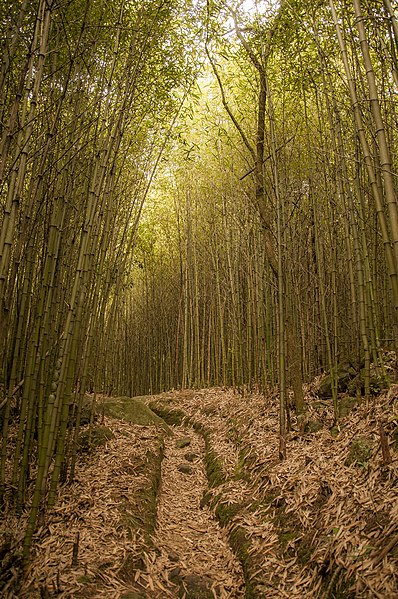Arundinaria is a genus of bamboo in the grass family the members of which are referred to generally as cane. Arundinaria is the only bamboo native to North America, with a native range from Maryland south to Florida and west to the southern Ohio Valley and Texas.
Within this region Arundinaria canes are found from the Coastal Plain to medium elevations in the Appalachian Mountains.
Arundinaria
Grouping of Arundinaria gigantea at Cane Ridge Meeting House in Kentucky, USA
'Topknot' at the top of an Arundinaria tecta 'switch cane' culm
Dried Arundinaria 'topknot' from the top of an Arundinaria gigantea 'giant river cane' culm
Bamboos are a diverse group of mostly evergreen perennial flowering plants making up the subfamily Bambusoideae of the grass family Poaceae. Giant bamboos are the largest members of the grass family, in the case of Dendrocalamus sinicus individual culms reaching a length of 46 meters, up to 36 centimeters in thickness and a weight of up to 450 kilograms. The internodes of bamboos can also be of great length. Kinabaluchloa wrayi has internodes up to 2.5 meters in length. and Arthrostylidium schomburgkii with lower internodes up to 5 meters in length, exceeded in length only by papyrus. By contrast, the culms of the tiny bamboo Raddiella vanessiae of the savannas of French Guiana are only 10–20 millimeters in length by about two millimeters in width. The origin of the word "bamboo" is uncertain, but it probably comes from the Dutch or Portuguese language, which originally borrowed it from Malay or Kannada.
Bamboo
Bamboo forest in Arashiyama, Kyoto, Japan
Serra dos Órgãos National Park, Brazil
Bamboo forest in Guangde, China








